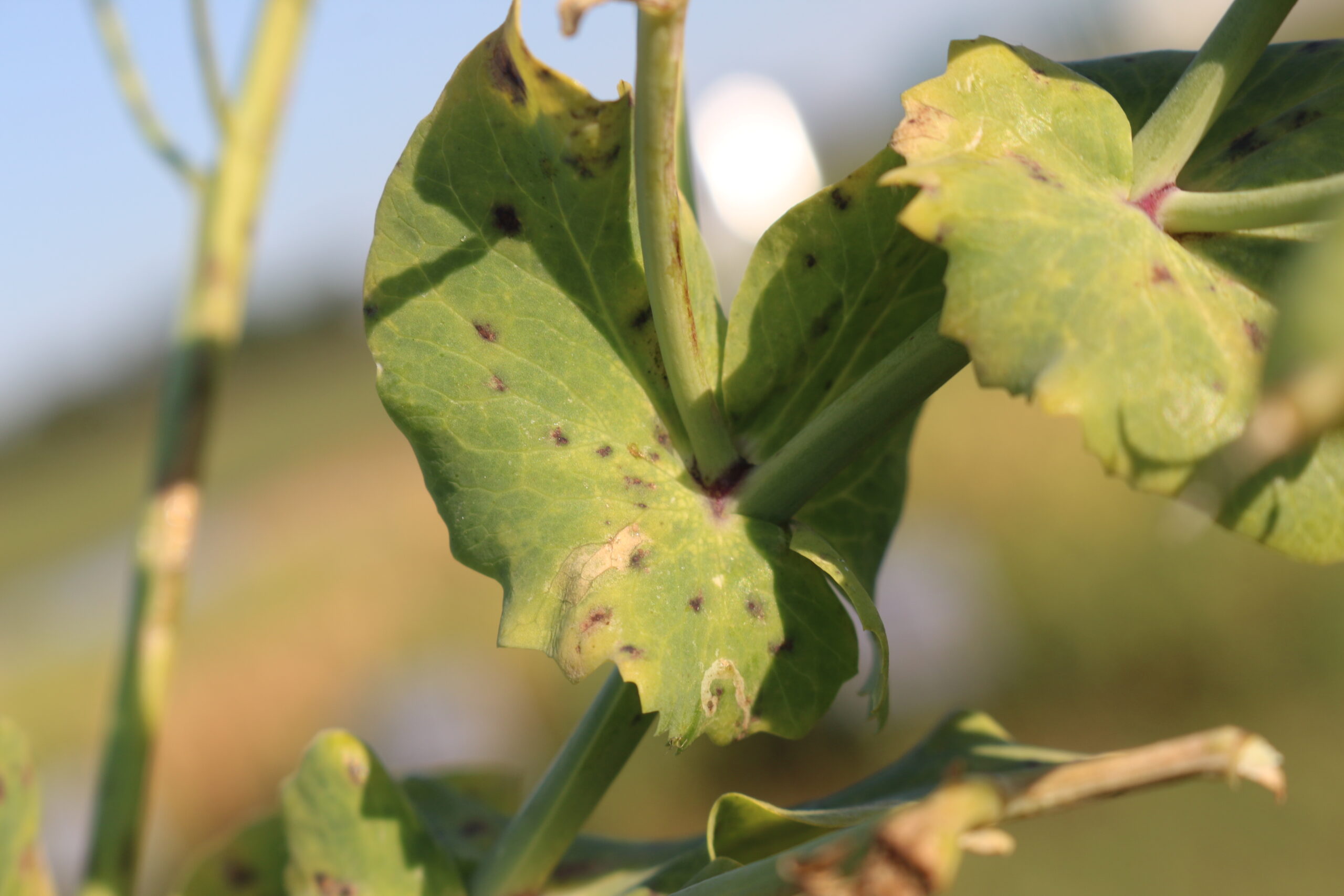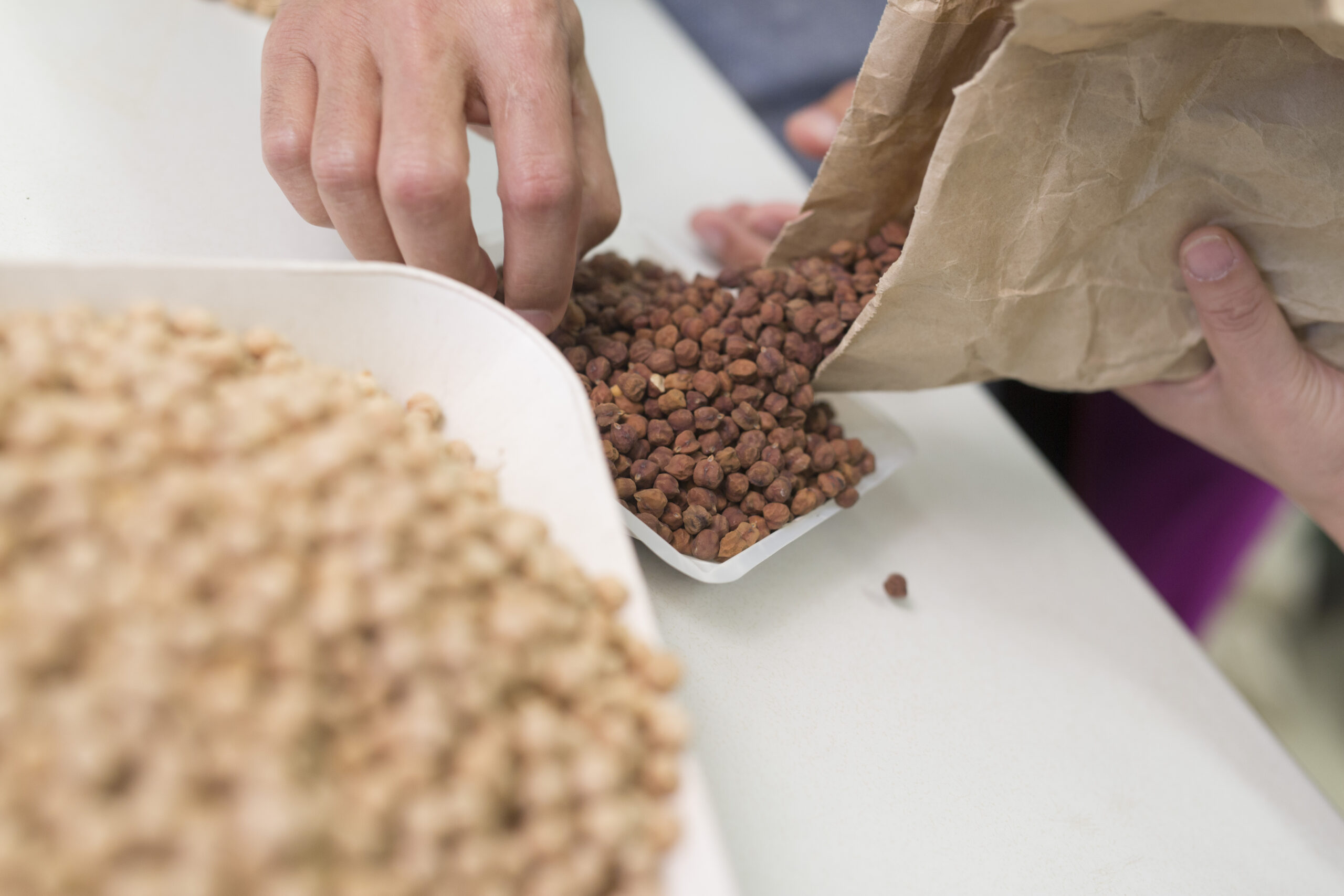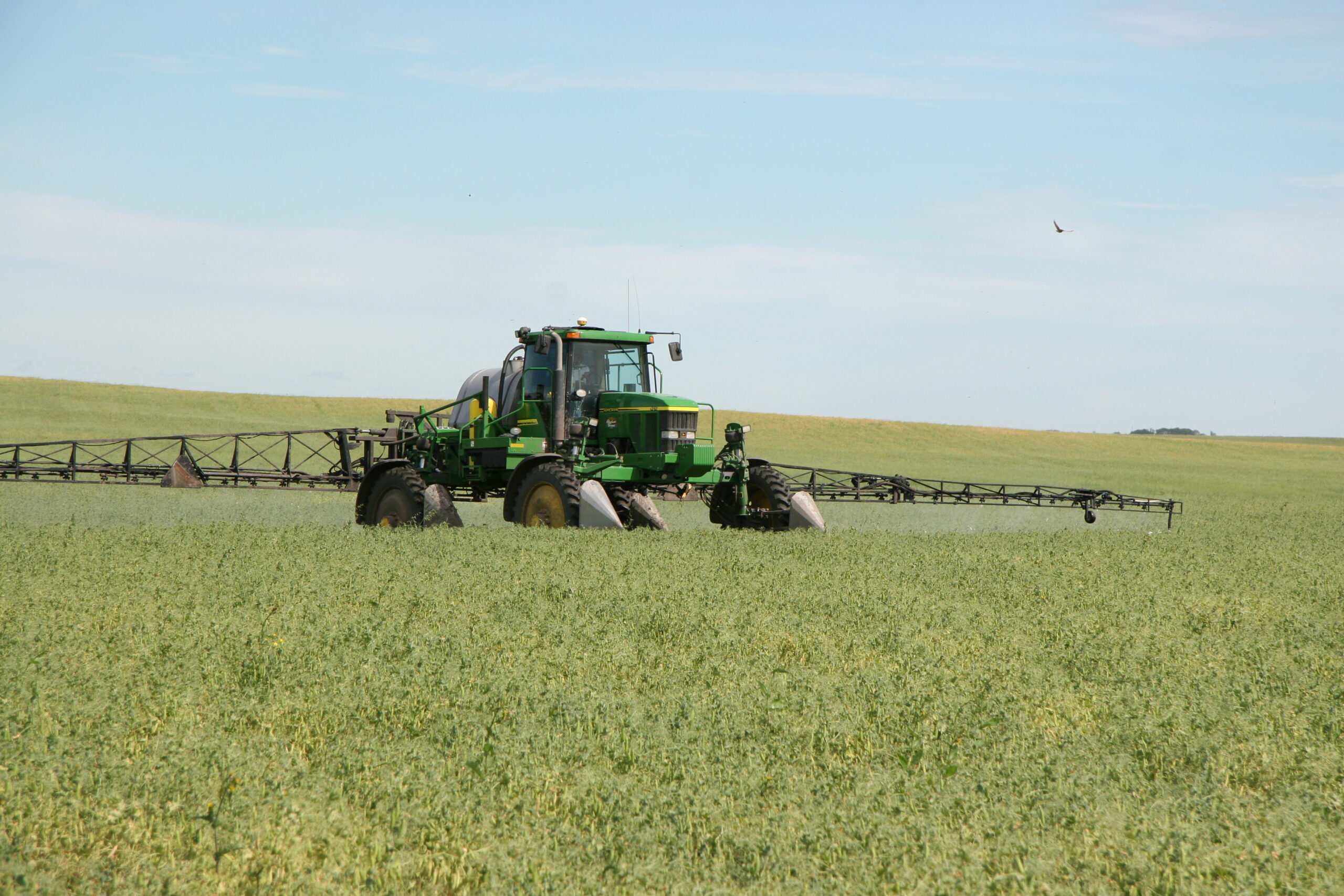Disease in peas is a serious concern and can have dramatic yield implications if not monitored, and no appropriate control measures are taken when risk is high. To determine the risk associated with Ascochyta and Mycosphaerella blight in pea, there is a disease decision support checklist has been developed by Alberta Agriculture and Rural Development (AARD) as a working tool for producers, to help in establishing thresholds for fungicide application.
Inspect the crop no later than the 10 node stage or 10 per cent flowering. Average the disease symptoms over at least 10 sites in the field. A risk value is then calculated as A+B+C+D.
- If the risk value is less than 65, a fungicide application is not recommended, but a new assessment should continue on a weekly basis until full flower.
- When the risk value is 65 or above, a fungicide application is recommended.
Fungicide Decision Support Checklist for Peas
| A. Crop Canopy | Risk Factor |
| Thin (high weed pressure, low yield expectations) | 0 |
| Moderate (some weeds, possibly low yield) | 10 |
| Normal (about 8 pea plants/ft2 or 85/m2) | 15 |
| Dense (more plants than normal, lush growth) | 30 |
| B. Leaf wetness/humidity/dew at noon | Risk Factor |
| None | 0 |
| Low | 10 |
| Moderate | 20 |
| High | 40 |
| C. Five-day weather forecast | Risk Factor |
| Dry | 0 |
| Unpredictable | 10 |
| Light showers | 15 |
| Rain | 20 |
| D. Symptoms on pea plants | Risk Factor |
| No visible symptoms | 0 |
| Up to 20 per cent of plants showing symptoms | 10 |
| 20 to 50 per cent of plants showing symptoms | 15 |
| 50 to 100 per cent of plants showing symptoms | 20 |
| TOTAL SCORE OF RISK FACTORS (A+B+C+D): |
Source: K. J. Lopetinsky1 and S Strydhorst2 2002
1Ag Research Division, AARD, Barrhead 2University of Alberta, Edmonton, Alberta, Canada
Ascochyta Complex/Blight
Three fungi can be part of the Ascochyta complex that cause leaf, stem, and foot rot symptoms on peas: Ascochyta pinodes, Ascochyta pinodella, and Ascochyta pisi. In the field, the symptoms caused by infection of these fungi can be difficult to distinguish from one another.
In Saskatchewan, the most common species is Ascochyta pinodes. The sexual stage of this fungus is Mycosphaerella pinodes and for this reason the disease is also referred to as Mycosphaerella blight. The other fungi involved in this complex are Ascochyta pinodella, causing foot rot, and Ascochyta pisi causing leaf and pod spot (Figure 1). Ascochyta pisi has been considered a minor problem in the past, but has become more common during the last few years.
Most Ascochyta blight symptoms observed in the field will be those of Mycosphaerella blight (Figure 2). Early symptoms will be found mostly under the plant canopy on lower leaves, stems, and tendrils. Symptoms first appear as small, purplish-brown, irregular shaped spots or flecks that can enlarge and coalesce, eventually causing blighting of the entire leaf. Severe infections may lead to girdling of the stem near the soil line, which is known as foot rot. Under prolonged moist conditions, or if the crop has lodged, pod lesions will form and expand and can cause pod senescence and seed quality loss.
Infested crop residue is the primary source of the infection. Infected seed is not considered a major source of inoculum. Mycosphaerella pinodes is the only Ascochyta species confirmed to form a sexual spore stage. Those spores result in air-borne ascospores allowing transmission of the disease over long distances.
Maximum effectiveness of fungicides registered for Ascochyta blight occurs if applied at early flowering. Fungicides prevent infection of healthy green plant tissue. Begin scouting during vegetative stage and continue to scout through flowering. Observe whether the disease symptoms are moving upwards in the plant canopy. If symptoms do not move beyond the lower thirds of the plant canopy by the flowering stage, large yield losses would not be expected.

Source: Canadian Phytopathological Society

Source: Saskatchewan Ministry of Agriculture



